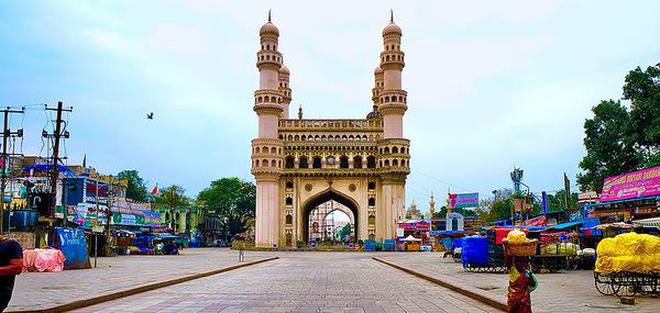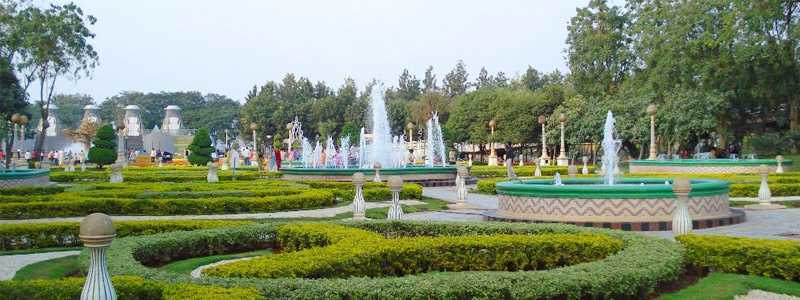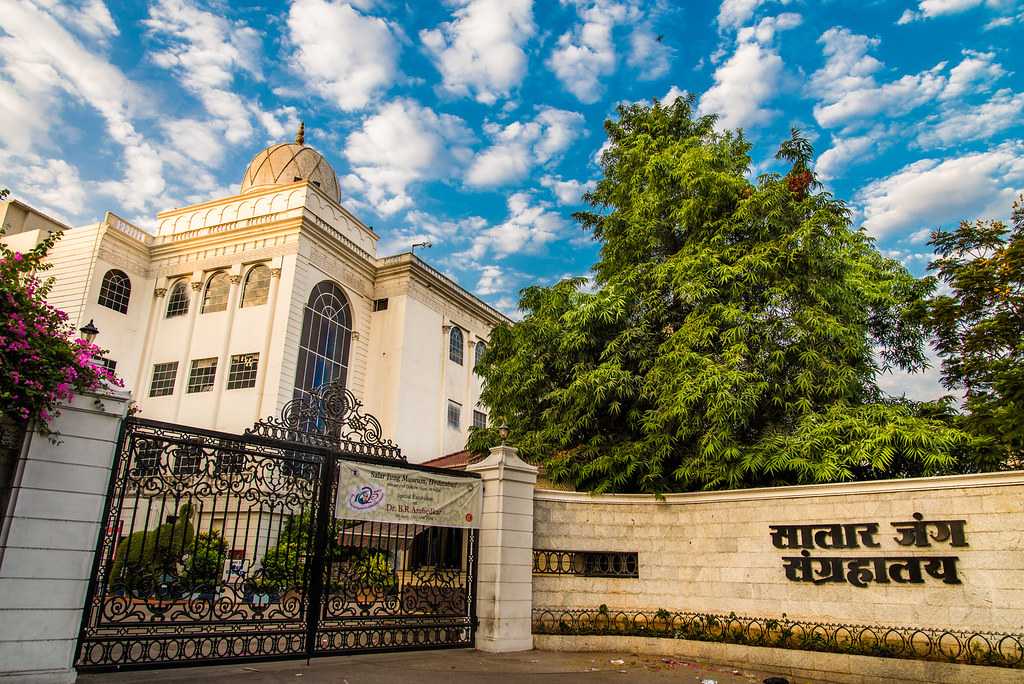Complete Guide about Golconda Fort
-
Location
Charminar, Charminar Rd, Char Kaman, Ghansi Bazaar, Hyderabad, Telangana 500002
-
Timings
Every Day
09:30 am to 05:30 pm
-
Entry Fee
For Indians Rs.5/-
For Foreigners Rs.100/-


Charminar
About Charminar
Without a doubt, Hyderabad’s most famous landmark, Charminar, has earned the moniker “Arc de Triomphe of the East.” Another name for it is “Mosque of the Four Minarets.” It would be sacrilege not to see this stunning architecture while on a Hyderabad trip, especially if you enjoy travelling. The Charminar has grown to be a recognised landmark for all of India, not just Hyderabad. Four turrets are the meaning of the Urdu word charminar (char- four, minar-turret).
The Charminar indeed contain four intricately carved pillars, one on each side, as its name would imply. In the midst of the Laad Bazaar’s bustle, this majestic building remains still. The Charminar, which is maintained by the Archeological Survey of India, is a symbol of the city’s historical past, as well as its glitz, splendour, and ethnic diversity. Since Mohammed Quli Qutub Shah of the Shah Dynasty built the Charminar in 1591, it has captivated tourists with its architectural splendour as well as its religious and historical significance.
Charminar(Hyderabad) Official Site Link
www.hyderabad.telangana.gov.in
The History
Sultan Mohammed Quli Qutb Shah constructed the Charminar in 1591. According to legend, he constructed this square building with four pillars and beautiful carvings in honour of his wife, Bhagmati. It is still unclear, though, why Charminar was actually built.
According to a widely held idea, Charminar was constructed to commemorate the end of the plague, which at the time had severely impacted the entire city. It is thought that the Sultan begged for this plague, which his people were experiencing, to end. Thus, after the disease subsided, he constructed the charminar as an act of worship for Allah. The first four caliphs of Islam are supposed to be honoured by the four pillars.
According to a widely held idea, Charminar was constructed to commemorate the end of the plague, which at the time had severely impacted the entire city. It is thought that the Sultan begged for this plague, which his people were experiencing, to end. Thus, after the disease subsided, he constructed the charminar as an act of worship for Allah. The first four caliphs of Islam are supposed to be honoured by the four pillars.
It is also believed that because of its Shiya Tazias-inspired style, it was constructed in honour of the Prophet Muhammad’s son-in-law, who died during the Battle of Karbala. Some people think that Sultan first met his future wife Bahgmati at the Charminar, where today’s Charminar is located.
According to a French traveller from the 17th century named Jean de Thévenot, the rationale behind its building is completely different. His account, which is consistent with the Persian writings as well, claims that the Charminar was constructed to mark the beginning of the second Islamic millennium.
‘Fill this my city with people as Thou hast filled the river with fishes, O Lord,’ reads the inscription on the foundation stone. This suggests that the monument was also erected to commemorate the founding of the city. According to historian Mohammed Safiullah, Charminar was constructed as Hyderabad’s focal point.The building project started in 1589 and was finished in two years at a total cost of Rs. 9 lakhs, or around 2 lakh huns/gold coins at the time. It is estimated to weigh roughly 14000 tonnes, and the base must be at least 30 feet deep. A minaret had collapsed in 1670 following a lightning strike. After that, it was fixed for roughly Rs. 58000. At a cost of Rs. 2 lakhs, Sikandar Jah repaired a portion of it in 1820.
Another mythology relating to the Charminar claims that it is connected to the Golconda Fort
through a hidden underground passageway. It was constructed for the royal family as a means of escape in case of emergency. However, no tunnel has been located as of yet.
The Architecture
Charminar was created by Iranian architect Mir Momin Astrawadi, who had relocated to Hyderabad. It has an imposing appearance and is evidently enduring the test of time. The monument is square in design and has four pillars, one on each side. The Shia “tazias” served as inspiration for the Charminar’s architectural style. These Tazias were constructed in honour of Hussain, the Prophet Muhammad’s son-in-law who died during the Battle of Karbala.
The monument is square and has 20 metres on each side. The monument is 11 metres wide on each side and looks out onto four major thoroughfares. The Charminar was constructed using lime mortar and granite.

The four caliphs are symbolised by the four pillars that surround Charminar. The height of these pillars, or minars, is 48.7 metres. These have four storeys, with beautifully carved rings surrounding each floor to divide it. A mosque, thought to be the oldest in Hyderabad, is located on the top level of Chaminar. There are 45 musallahs, or prayer rooms. There is an open area adjacent to this that can be utilised to accommodate additional people during special occasions like Friday prayers or festivities. It is situated at the westernmost point of the roof of the monument. There are 149 winding steps that go up to it. Furthermore spectacular is the view from the top.
You may locate a small vazu with a tiny fountain intended to supply water for the ablution before giving prayers in the centre of the Charminar courtyard.
On Charminar, one may see the distinguishing features of Qutub Shahi structures. Each pillar has been constructed in such a way that it resembles a lotus leaf. In comparison to minars, the structure’s arches do give it a slightly shorter appearance. On each of the building’s four sides, four clocks were also erected in the year 1889.
Dekho Apna Desh
The DAD of Tourism
Get Direction to Charminar
Near Attractions















